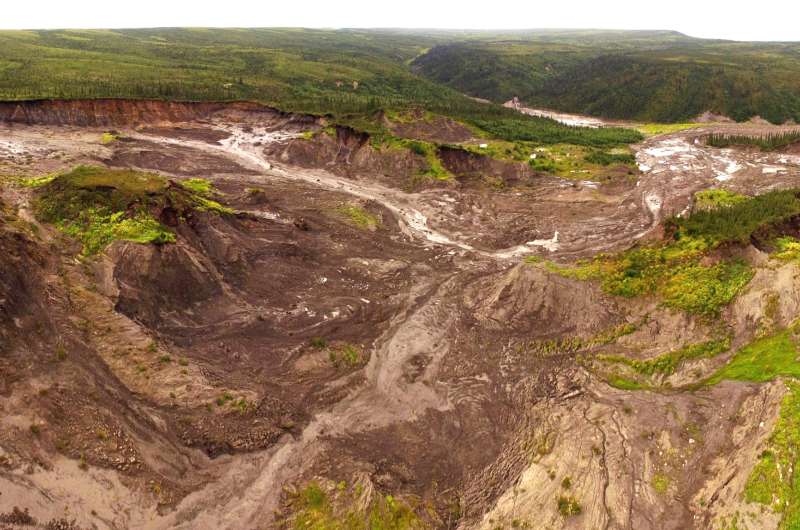Climate-driven permafrost thaw

In bitter cold regions like northwestern Canada, permafrost has preserved relict ground-ice and vast glacial sedimentary stores in a quasi-stable state. These landscapes therefore retain a high potential for climate-driven transformation.
In their open-access Geology article published online on 7 Feb. 2017, Steven Kokelj of the Northwest Territories Geological Survey and colleagues write that climate-driven renewal of deglaciation and potential postglacial permafrost landscape evolution has major implications for predicting the nature and trajectories of northern landscape change and the cascade of downstream impacts.
They show that mapping across 1.27 million square kilometers of northwestern Canada points to large thaw-induced slope disturbances (thaw slumps) that delineate the margins of former ice sheets. Recent intensification of this thaw slumping has mobilized primary glacial sediments, triggering a cascade of fluvial, lacustrine, and coastal effects.
More information: Steven V. Kokelj et al. Climate-driven thaw of permafrost preserved glacial landscapes, northwestern Canada, Geology (2017).
Journal information: Geology
Provided by Geological Society of America




















